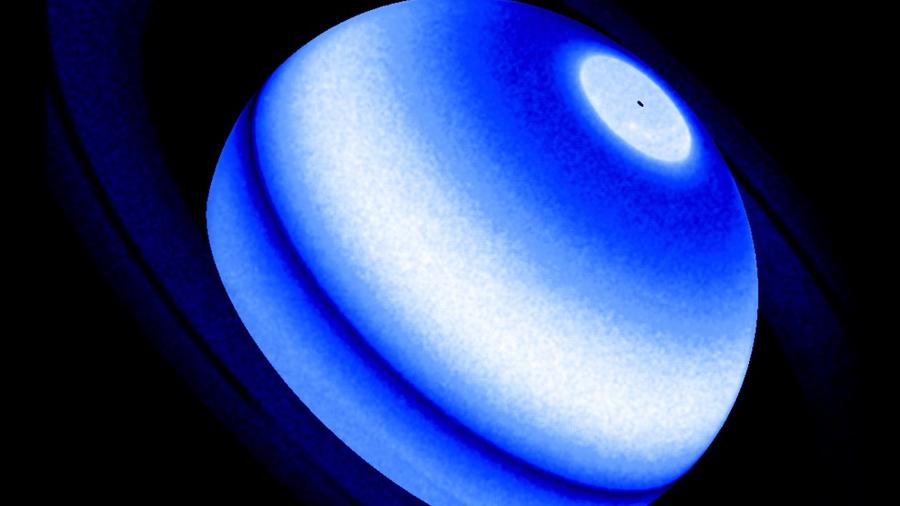 This composite image shows the Saturn Lyman-alpha bulge, an emission from hydrogen which is a persistent and unexpected excess detected by three distinct NASA missions, namely Voyager 1, Cassini, and the Hubble Space Telescope between 1980 and 2017.
This composite image shows the Saturn Lyman-alpha bulge, an emission from hydrogen which is a persistent and unexpected excess detected by three distinct NASA missions, namely Voyager 1, Cassini, and the Hubble Space Telescope between 1980 and 2017.
LOS ANGELES — Saturn's vast ring system is heating the giant planet's upper atmosphere, according to the latest discovery revealed by NASA on Thursday.
The phenomenon has never before been seen in the solar system, said NASA.
The discovery was made using 40 years of data from several NASA missions, including NASA's Hubble Space Telescope and retired Cassini probe
The discovery was made using 40 years of data from several NASA missions, including NASA's Hubble Space Telescope and retired Cassini probe, in addition to the Voyager 1 and 2 spacecraft and the retired International Ultraviolet Explorer mission.
READ MORE: Discovery of 20 new moons puts Saturn ahead of Jupite
The most feasible explanation for the phenomenon is that icy ring particles raining down onto Saturn's atmosphere cause this heating, according to NASA. This could be due to the impact of micrometeorites, solar wind particle bombardment, solar ultraviolet radiation, or electromagnetic forces picking up electrically charged dust.
The research was published Thursday in the Planetary Science Journal.
"We are just at the beginning of this ring characterization effect on the upper atmosphere of a planet. We eventually want to have a global approach that would yield a real signature about the atmospheres on distant worlds," said Lotfi Ben-Jaffel of the Institute of Astrophysics in Paris and the Lunar & Planetary Laboratory in University of Arizona.
READ MORE: Cassini spacecraft: 'Magnifying glass' at Saturn until end
"One of the goals of this study is to see how we can apply it to planets orbiting other stars. Call it the search for 'exo-rings,'" said Ben-Jaffel.


